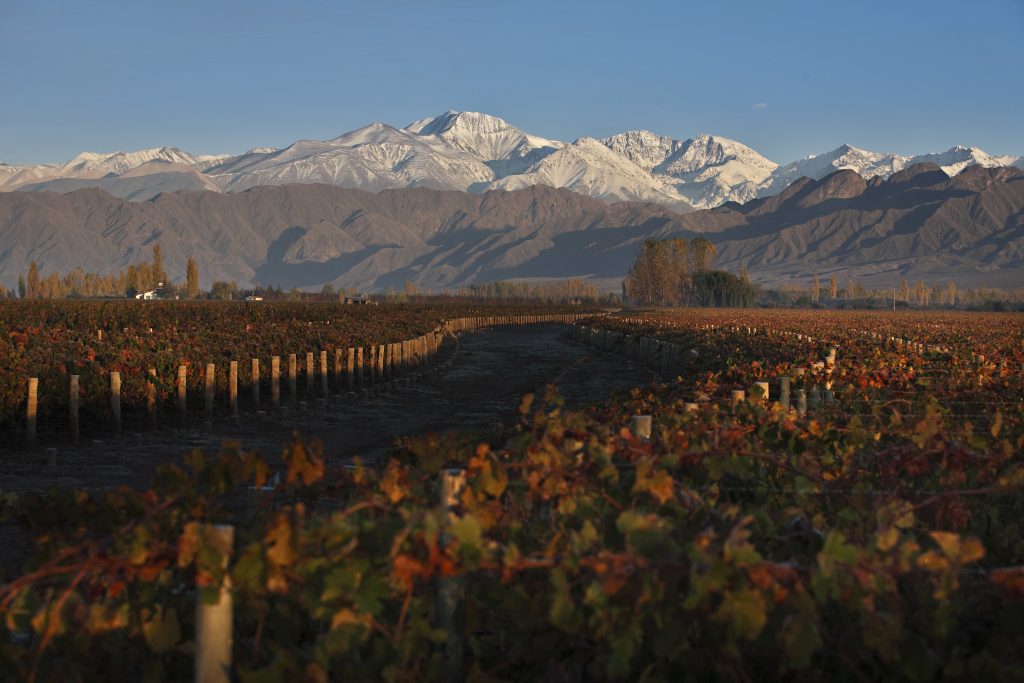“While a novelty generates curiosity, only a classic has lasting value.” It is a maxim that counts for pretty much everything in life, and was whispered to me recently by an importer of English wines who was passing through Argentina. We had been talking for at least an hour about the incredible advances in altitude and style and the various developments in soil research, when Simon Farr, founder of Bivendum, slipped in the remark at the end of our conversation.
If Argentina and Mendoza were new corners of the world, they wouldn´t have much to contribute. But both the country and the province have almost two centuries wine making experience, and there are terruños (terroirs) which have earned their place over the years. It is these terroirs that have transcended novelty: they are classics in their own way, producing classic wines and holding their value and increasing, precisely because they are classics, as Farr said, despite fashions, trends and novelties switching the focus to other regions.
After two decades of in depth research and development in the Valle de Uco, it is worth reviewing those regions that hold their place in history. Especially the less discussed GIs of today, like Vistalba, Perdriel and Lunlunta. In short, an invitation to rediscover some classic terroirs of Mendoza.
Vistalba and La Compuertas. Two centuries ago, this region was being cultivated for the simple reason that it was the water intake for the city and its irrigation system. In fact, you can still visit the remains, known as Toma de los Españoles, an arch in ruins on the banks of the Mendoza River. A 20 minute car ride from downtown and one of the most accessible and colourful corners of Mendoza to get lost in.
From here, at 1,070m, with soils levelled for irrigation, muscular Malbecs with very sweet tannins were created. Some prominent vineyards in the area are Alizarine, from Bodega Altavista; Finca Los Nobles, from Luigi Bosca; Las Compuertas from Terrazas de los Andes; Vistalba, of the eponymous winery. They are not the only ones but some of the most renowned. Unfortunately, today the area is so close to the city that best vineyards are at some risk of urbanisation.
Perdriel. Until 1895, it was the southern border of wine production in Mendoza. The reason was that Perdriel was on the other side of the river, which acted as a natural barrier. This stony ground was a bastion of red wine par excellence throughout the twentieth century.
With thin soils full of rounded stones, produced by the passage of the river, Perdriel offers one of the best places in the province to produce Cabernet Sauvignon: the wines are somewhat emaciated, but very expressive and fine with firm tannins. At 950 meters above sea level, in this area there are pockets of cold air along the river which generate very cool nights. Some of the classic vineyards of the region are Perdriel, Bodega Norton; Los Aromos, Bodega Terrazas; Marchiori, owned by Viña Cobos; Bella Vista, Achaval Ferrer. To the untrained eye, it is easy to confuse Perdriel with Agrelo, as the division is not always clear. The easiest way to remember is that from the national route 7, north is Perdriel, south is Agrelo.
Agrelo. Unlike Perdriel, Agrelo is an extensive region with deep soils climbing towards ‘las cerrilladas’ (little hills) in the West. From 950m to 1,100m in a north-south strip, about 8km wide. The secret is that there are no stones and soil depth ranges from about 3 meters in the center to a few centimetres in the west, with the presence of clay, silt and sand.
This type of soil guarantees full bodied Cabernet Sauvignons with fine tannins. The availability of land and water that made it one of the first growing areas in the 1990s, although there were good vineyards before this. It hosts some modern wineries and at the same time it offers some very renowned vineyards. Especially La Piramide of Catena; La Zulema, of Pulenta Estate; Remolinos from Decero; and Finca La Anita, among others.
Lunlunta. An area of Mendoza, shared by two departments: Maipu and Lujan de Cuyo. However, Lunlunta has such an identity of wines that since the end of the nineteenth century it has had its own terroir named after it. Located on the north bank of the Mendoza River and east of Perdriel, it is formed by the alluvial terraces of the river around 850 meters above sea level.
The lowest areas, known as Bajo Lunlunta, are very stony, and the higher, more sandy. It is an area with outstanding Malbec: Deep and muscular, with rounded, polished tannins, which have earned it its fame. Good examples of the area include Domain Saint Diego, Norton Lot Lunlunta; and Bodega Carinae.
Barrancas. For many years, this area was a completely unknown but absolutely crucial area in winemaking. Planting began in the 1940s, when Samuel Flichman planted vineyards of Syrah and Cabernet Sauvignon south of the Mendoza River and east of Perdriel, just across from the Cuchillas Lunlunta: a formation of low hills that closes access to this area and works as a natural boundary with Agrelo and Perdriel.
Today, a handful of wineries have developed vineyards, where the Cabernet Sauvignon is among the best of Mendoza. The reason is to be found in the type of soil, fine alluvial material, with an abundance of rounded stones towards the riverbed. The height is around 750m. Notable vineyards include Toso, Finca Agostino and Flichman.
So, a gradual descent of about 300m from Las Compuertas to Barrancas, with changing soils along the way. The vines are between half a century and a century and a half in age. The same goes for the wines made from them: their styles and how they were made. In short, classic terroirs that increase in value over the years.



